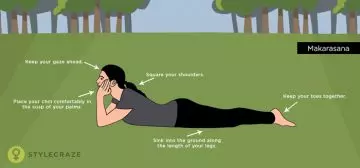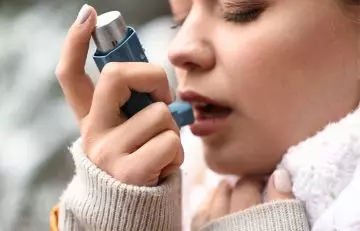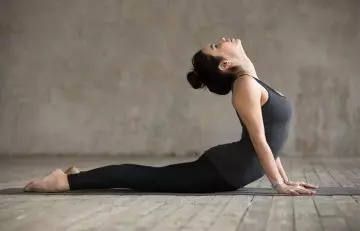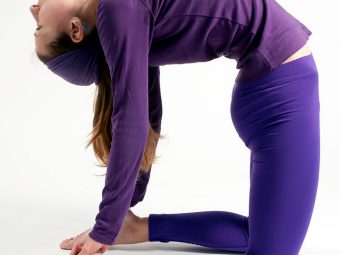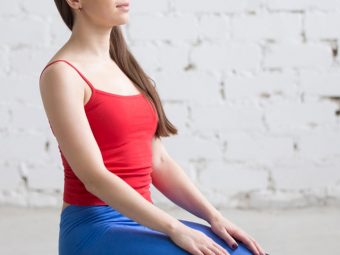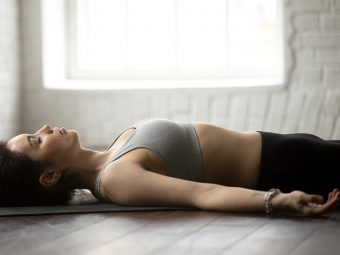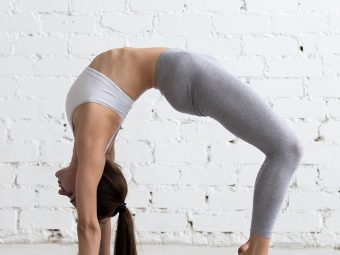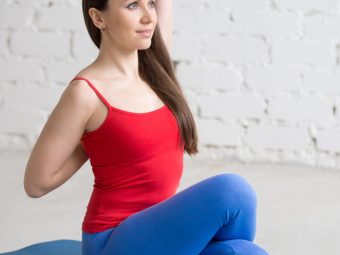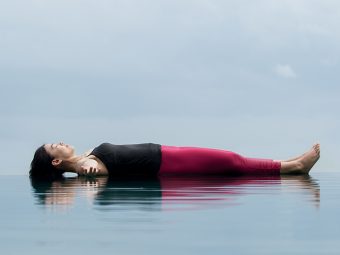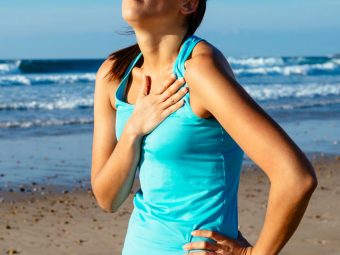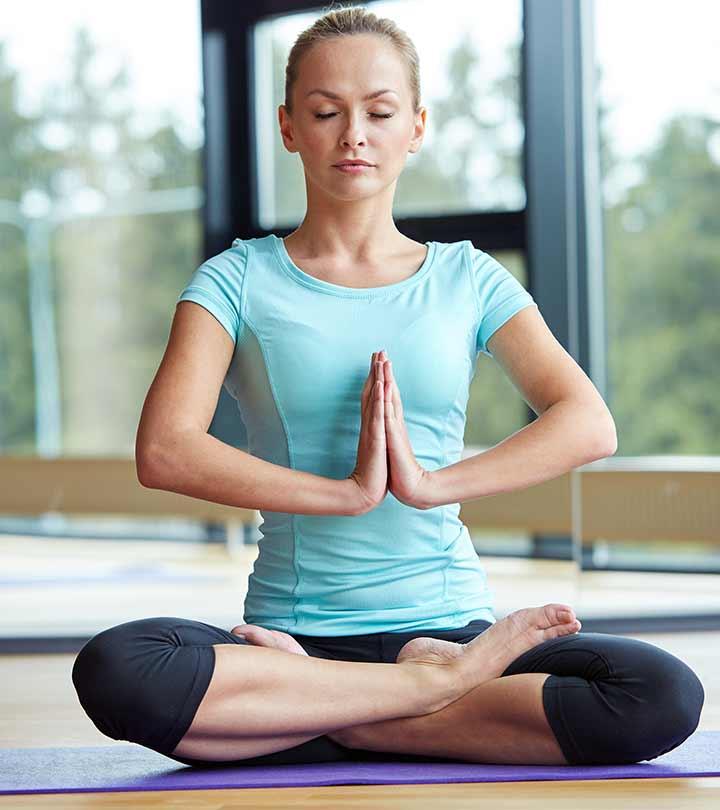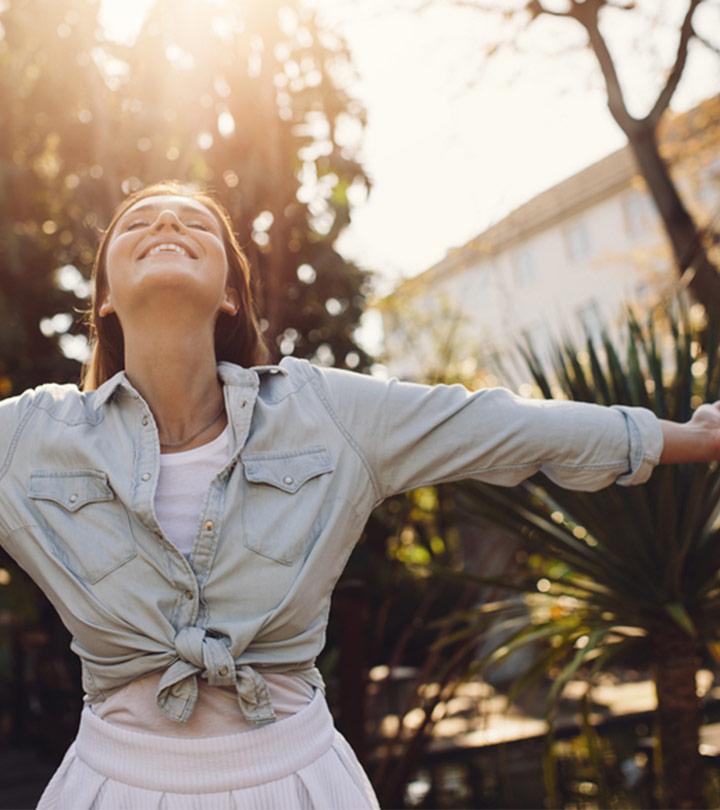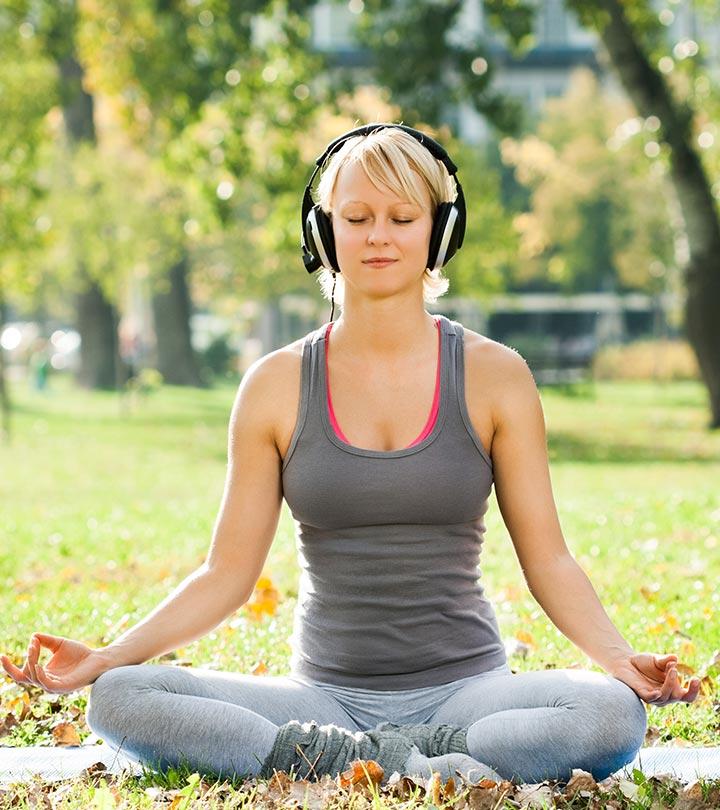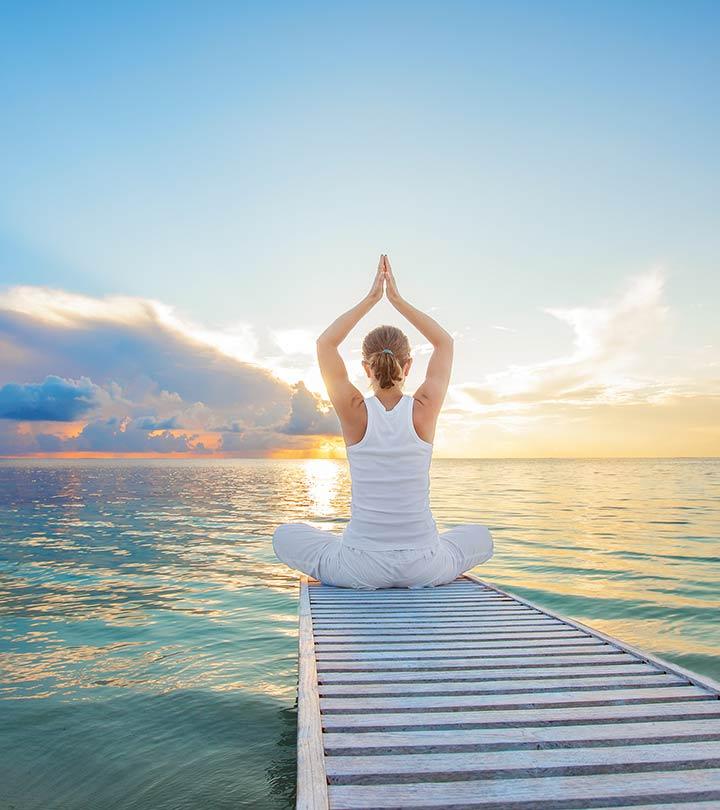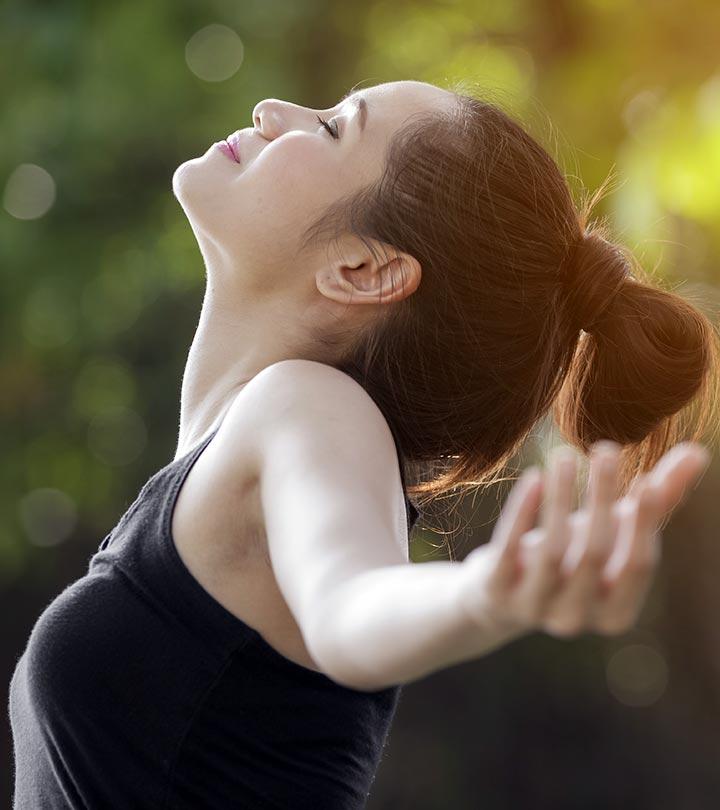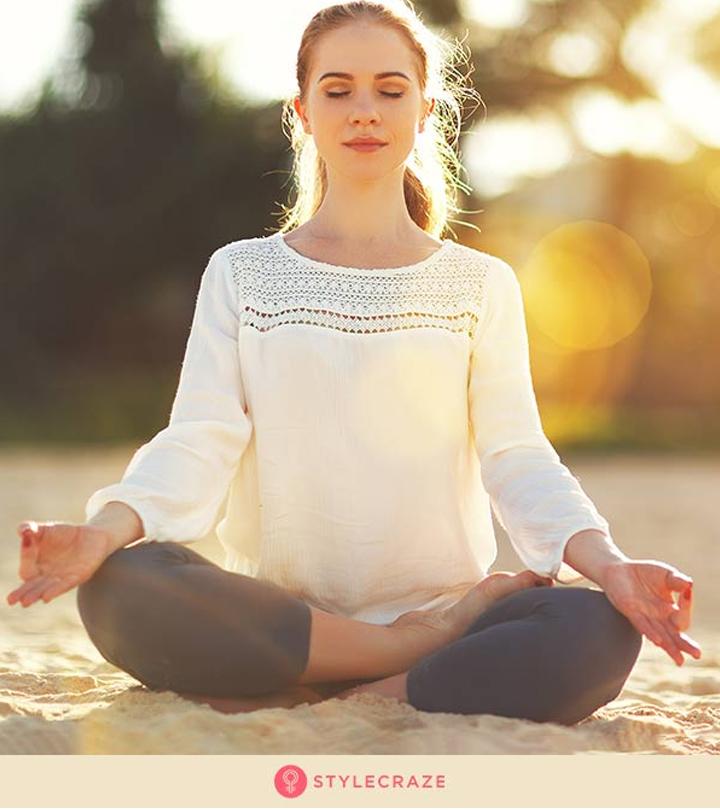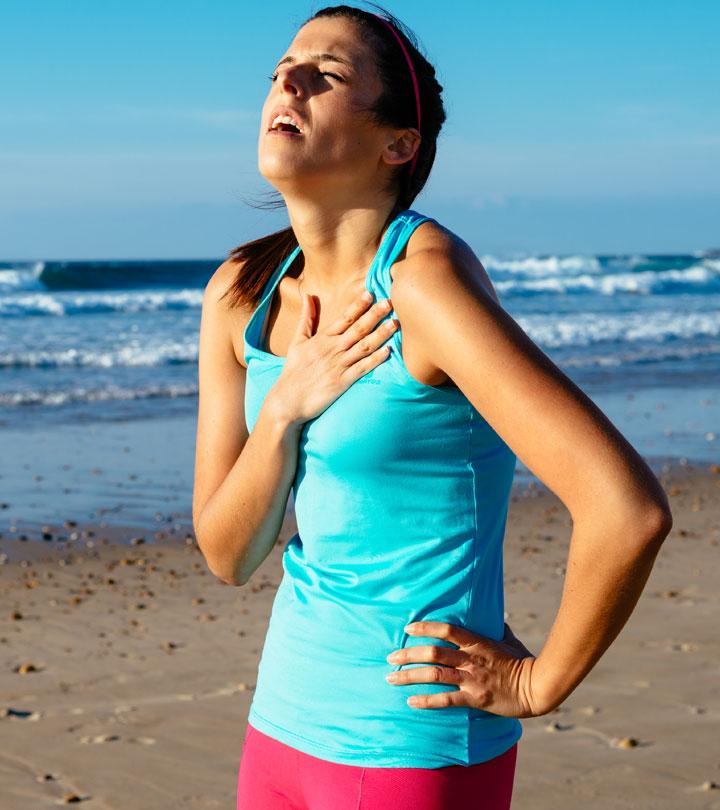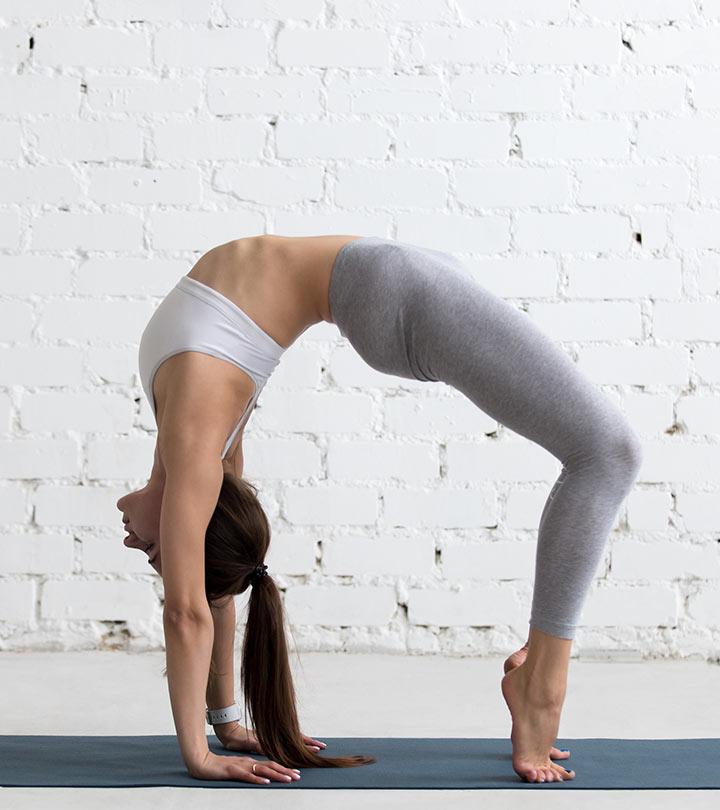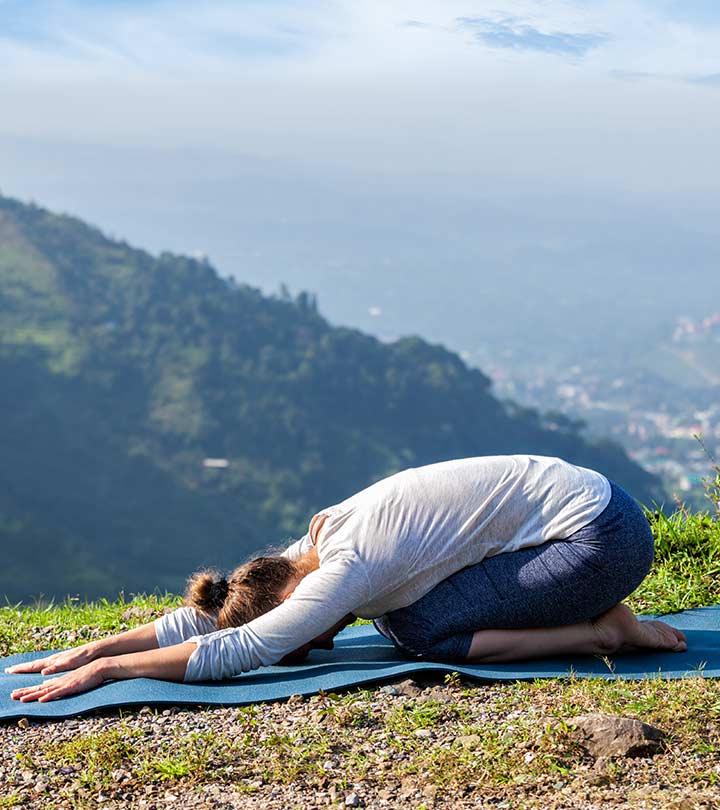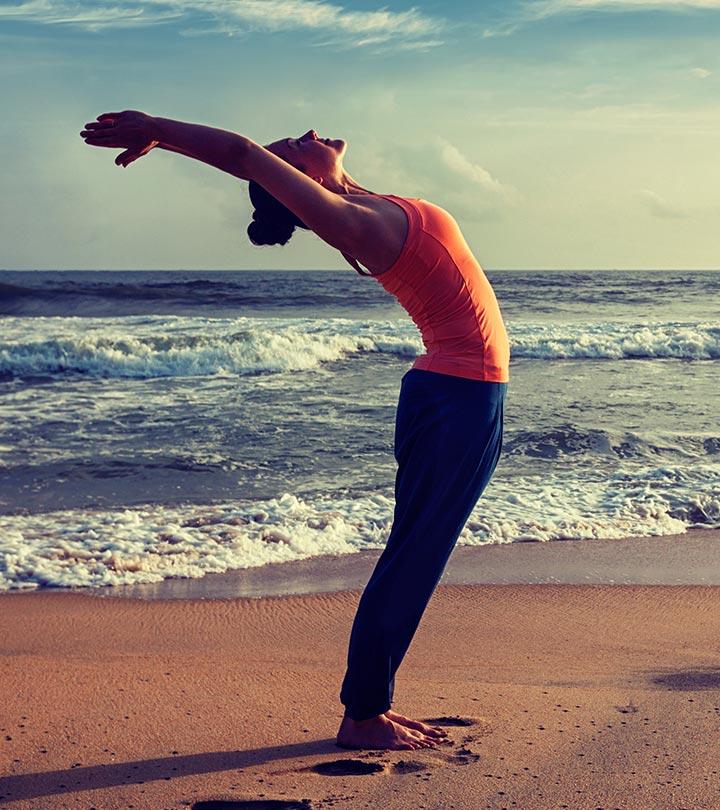How To Do The Makarasana And What Are Its Benefits?
Because doing the crocodile yoga posture every day can keep your shoulder and back issues at bay.
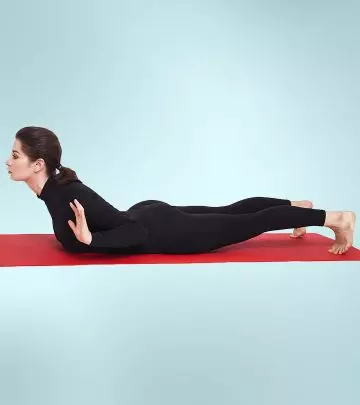
Image: Shutterstock
Makarasana (MAH-kuhr-AWS-ah-nuh) is a yoga pose commonly referred to as the crocodile pose. While makar means crocodile, asana means pose.
The makarasana yoga pose is a great way to address your shoulder and back problems. It resembles the resting position of a crocodile, with its neck and face raised above the surface of the water. This asana is usually practiced to ease the strain caused by performing other poses. So, ending your yoga session with makarasana is the best practice. In this article, we give you a step-by-step how-to guide to do this pose, precautions to be taken, and some tips to make it easier. Keep reading!
 Did You Know?
Did You Know?In This Article
All You Need To Know About Makarasana
1. What You Should Know Before Practicing Makarasana
Makarasana is practiced at the end of a yoga session to cool down the body and give it the necessary rest. So, it is best to practice Makarasana early in the morning on an empty stomach and clean bowels. In case you are not able to practice it in the morning, you can do it in the evenings after a three to four-hour gap from your last meal. If you want to practice only Makarasana, it is not necessary that your stomach must be empty.
Level: Beginner
Style: Hatha Yoga
Duration: 2-5 minutes
Repetitions: 6
Strengthens: Spine, Shoulders, Arms, And Chest
Improves: Spinal strength, flexibility, back pain, and slip disc. It is beneficial for all spine-related problems.
Stretches: Legs, Chest Muscles, Back Muscles, And Buttocks
2. How To Do The Makarasana (Crocodile Pose)
- Lie down on the floor on your stomach.
- Fold your hands and keep the tip of the elbows on the ground with your fingers facing upwards. Keep your elbows shoulder distance apart.
- Now, raise your shoulders and head. Keep your neck straight and look ahead.
- Bend your head a little forward and place your chin in your palms.
- Stretch out your legs with the toes facing outwards. Feel your body touching the ground.
- Breathe normally and slowly and relax your muscles.
- Stay in the asana for a few minutes until you feel completely relaxed.
- To release from the position, gently remove your palms from the chin, bring your shoulders and head down, and roll over.
3. Precautions To Be Taken
Make sure that your body is comfortable while practicing the asana. If you have a serious back injury, it is best to avoid Makarasana. For those with neck injuries, avoid any pressure or support for the neck and let it stand neutral. Otherwise, place a folded blanket around the neck as support during the asana.
If you are suffering from serious injuries and deep psychological issues, it is best to avoid the asana. In such cases, you can practice meditation instead. If you plan to perform this asana, make sure you consult a physician and have a yoga teacher supervise you.
 Quick Tip
Quick Tip4. Tips For Beginners
Initially, it might be tough to balance yourself in the pose. You might shuffle a bit due to imbalance. To avoid this, use your hands for support and raise them to complete the asana. With practice, your balance will improve, and you can assume the pose in the correct manner.
As Makarasana is a relation pose performed at the end of a yoga session, it is very easy to fall asleep in it. Keep yourself awake and let your body relax.
5. Advanced Variations Of Makarasana
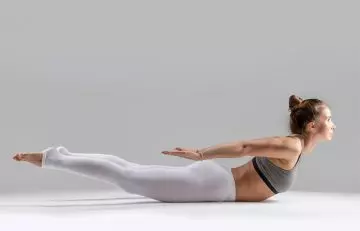
- You can proceed to the Shalabhasana or the Locust Pose as a variation to Makarasana.
- All you need to do is take off your palms from the face, stretch out your arms forward without bending, and keep the palms facing each other. Turn your head down till your ears are parallel to the arms. Now, lift off your legs from the floor at a 60-degree angle and hold the pose.
- Another variation is to go deeper into the Crocodile Pose. Raise your legs and bend them at the knees, bringing the soles of your feet towards your buttocks. The pelvic area must be perpendicular to the floor. Then, lift your torso by stretching your arms.
6. Benefits Of Makarasana
- Makarasana is a relaxation pose for your shoulders and spine
- It can treat asthma and any lung-related issues
- It helps in curing slip disc, spondylitis, and sciatica
- The asana stretches the hip muscles
- It relaxes your body completely and keeps you rejuvenated
- It relieves the body and provides stress relief.
- Makarasana treats hypertension, heart diseases, and mental disorders
- It stretches the muscles of the abdomen, chest, and neck, relieving fatigue and aches in those areas
- The asana keeps backache at bay
- Makarasana helps you to breathe slowly, efficiently, and deeply, which promotes wellness.
- It improves physical fitness and mindfulness.
- The asana turns your mind inward, thus offering inner peace and helping prevent anxiety.
- Makarasana releases all the tight knots in your body and makes it flexible
Nazneen, a blogger, discusses the stress-relieving benefits of the yogasana Makarasana, also known as ‘Aaram Lakshi Asana’ or the crocodile pose. She guides readers through the steps of performing Makarasana, highlighting its impact on various body parts. Nazneen adds, “This asana aids in spherical stretching of the body including rear body, thighs, calf muscles, buttocks, arms and neck. (i) ”
7. Preparatory Poses
Bhujangasana
Gomukhasana
Sethu Bandhasana
8. Follow-Up Poses
Dhanurasana
Ustrasana
Salamba Sarvangasana
Infographic: 5 Primary Benefits Of Makarasana
Makarasana or the Crocodile Pose is practiced to heal conditions involving the neck, shoulder, and spinal cord. The asana not only relieves aches but also improves breathing and brings about a sense of calmness in a stressful lifestyle. Check out the infographic below for detailed knowledge about its various health benefits. Illustration: StyleCraze Design Team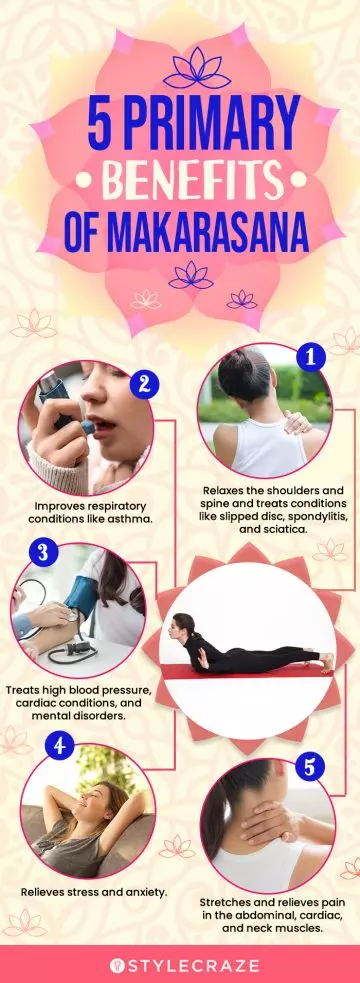
Makarasana yoga helps relax the body and is usually done at the end of a yoga session. The pose, resembling a resting crocodile, helps relieve the tension in the body and the mind, reduces lung issues like asthma, treats knee pains, slipped disc, spondylitis, high blood pressure, heart issues, and mental illness disorders, reduces fatigue, etc. Do not do this pose if you have a back injury, and use a folded blanket as a support if you have neck issues. For effective results, always do this relaxing pose on an empty stomach, preferably in the morning. You can also try pranayama or even advanced poses of makarasana once you cross the beginner level.
Frequently Asked Questions
Is Makarasana a prone pose?
Yes. You must lie in the prone position (lying face down) to do makarasana.
Are Shavasana and Makarasana relaxative asanas?
Yes. These are relatively easy yoga poses that relax your muscles and calm your mind and spirit. Moreover, they help you unwind, relieve your stress and improve your mood and posture.
Key Takeaways
- In makarasana, makar stands for crocodile. It is performed towards the end of a yoga session to ease the stress.
- It stretches the entire body and strengthens the shoulder, arms, and chest.
- Lie face down and hold the chin in the palm with elbows touching the ground. Stretch the legs with toes pointing outward.
- You can do it in 6 repetitions with each of 2-5 minutes.
- Be extra careful if you have a severe back injury or deep psychological issues. Consult with a doctor or practitioner.
- There are advanced and follow-up variations, such as Shalabasana, Dhanurasana, and Ustrasana.
Master the art of Makarasana (Crocodile pose) with beginner-friendly yoga tutorials. Experience the physical and mental benefits of this powerful asana. Watch the video and start your yoga journey today.
Personal Experience: Source
StyleCraze's articles are interwoven with authentic personal narratives that provide depth and resonance to our content. Below are the sources of the personal accounts referenced in this article.
i. Simple Yogasana To Relieve Yourself From Stress – Makrasana – Part 2https://yogatranquility.wordpress.com/2017/04/25/simple-yogasana-to-relieve-yourself-from-stress-makrasana-part-2/





